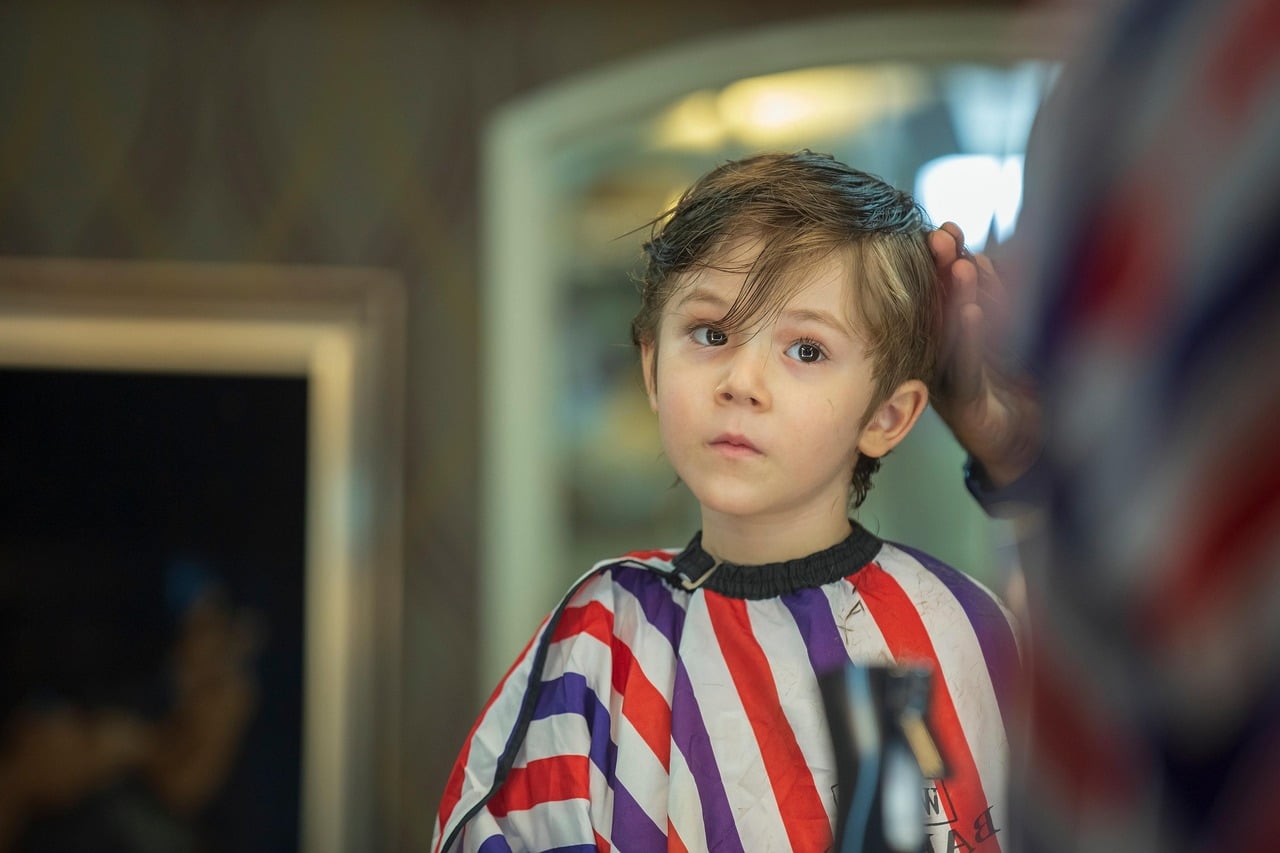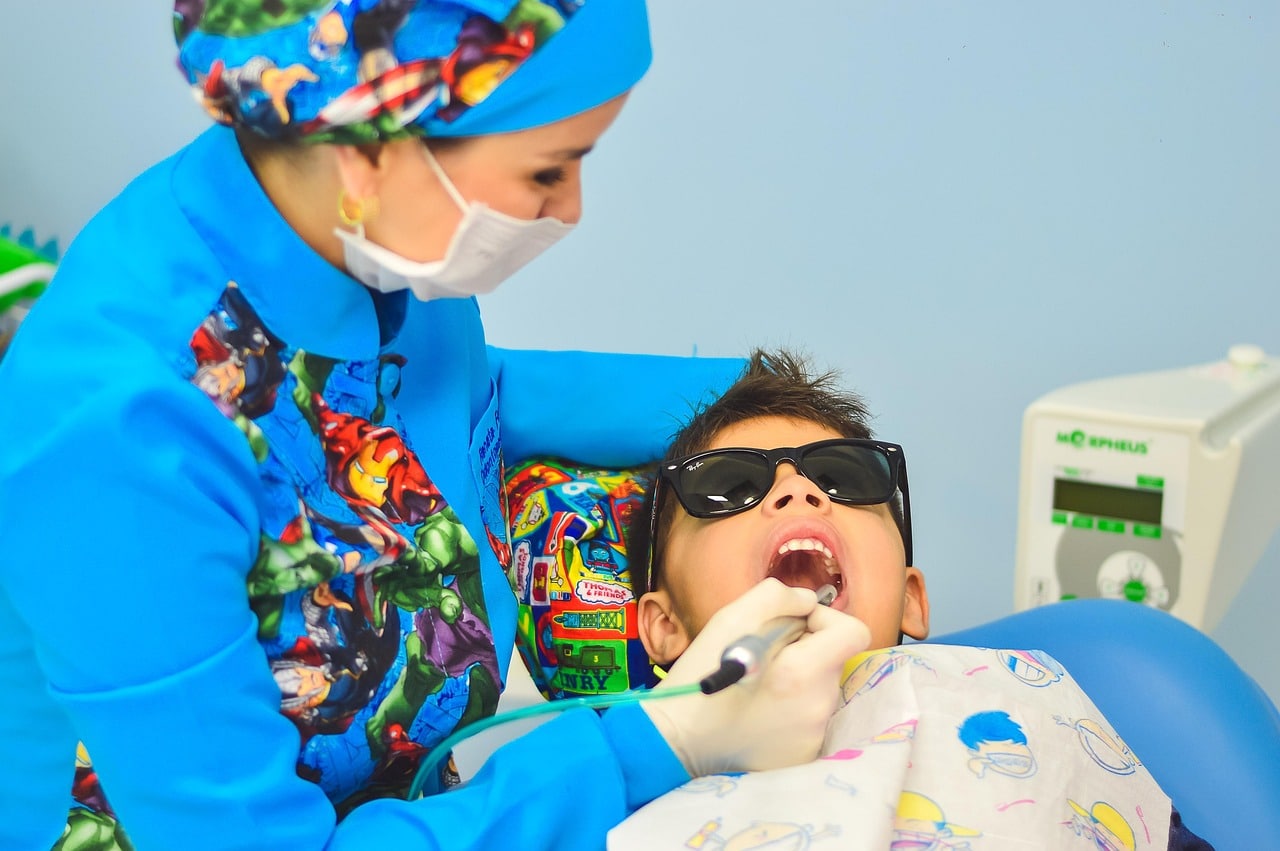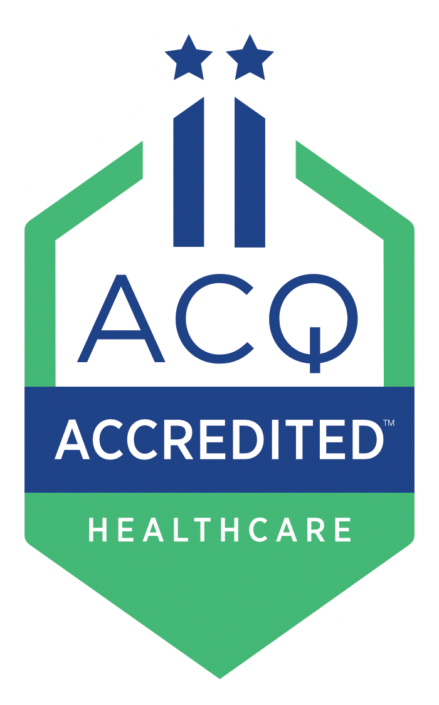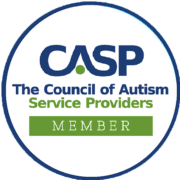Dental Care, Haircuts and Autism: Understanding Sensory Sensitivities and How to Make Them Easier
The hair salon and the dentist office are often sites of significant anxiety for learners with Autism Spectrum Disorder (ASD). Between the unfamiliar sounds, sensations, and smells, and having to sit still for an extended period – these environments can be overwhelming. In this article, we’ll discuss some of the common triggers that learners with autism encounter during routine hair and dental appointments and share some evidence-based strategies to improve their experience.
Autism & Haircuts: Triggers
Neurotypical learners tend to be at ease at the hair salon – after all, it doesn’t hurt when hair is cut off. Learners with autism, though, are bombarded with things to process and tolerate, making an “ordinary haircut” a potentially stressful event. Here are a few examples of how autistic people can struggle with haircuts.
Sensory Sensitivities
The buzzing and vibration of clippers, the snipping sound of scissors, and the feeling of hair falling on the skin can be distressing. Other sensory challenges may include water spray, sudden temperature changes, and the texture of hair products or towels.
Visual & Auditory Overload
Bright lights, mirrored reflections, and background noise from blow dryers and chatter can contribute to visual and auditory overload. Additionally, the physical sensation of having someone touch their head, face, or scalp may feel uncomfortable or intrusive to learners.
Fear & Anxiety
For some learners, the disruption to their usual routine and the visual change in their appearance after the haircut can cause heightened anxiety. Fear of pain, anticipation of discomfort, and difficulty communicating their preferences can make the experience even more challenging.

Autism & Dental Appointments: Triggers
The fear of pain is typically more pronounced at the dentist than at the salon due to the more invasive nature of the process. Dental visits often involve oral discomfort, strange tastes and textures, and the sensation of tools inside the mouth. What’s more, the patient can’t easily look around or verbally communicate during some procedures, increasing feelings of frustration, anxiety, and a loss of control.
Sensory Sensitivities
Aspects of a dentist appointment can be physically uncomfortable. The feeling of latex gloves, dental instruments in the mouth, and gritty or foamy textures from toothpaste or fluoride treatments, as examples, can cause distress. Oral sensations like pressure during cleaning or having a mouth prop in place can also be overwhelming.
Visual & Auditory Overload
Bright overhead lights, the high-pitched whir of dental drills, and constant suction noises can be jarring. The busy environment, with multiple sounds and movements, can make it difficult for learners to process everything at once.
Fear & Anxiety
There’s a lot that happens during a dentist appointment that’s unpredictable. Being asked to stay still for extended periods and not knowing what comes next can heighten anxiety. Having to lay down or recline and keep your mouth open feels vulnerable. Some learners feel trapped or misunderstood, which can trigger panic or sensory overload.
How to Prepare Autistic Learners for Hair & Dental Appointments
Preparing a learner with autism for a haircut or dental appointment involves several thoughtful steps to reduce anxiety and create a more positive experience.
Choose a Sensory-Friendly Facility
Do some research to find a salon and dentist that has worked with learners with autism before. Ask for recommendations from autism community groups or call salons and dentist offices directly to learn about their experience, comfort level, and examples of accommodations.
Visit in Advance
Take a tour before the appointment to introduce your learner to the space, sounds, and staff. If possible, share your learner’s preferences and sensory sensitivities with the stylist or hygienist and dentist.
Create a Social Story
Use step-by-step visuals or a story to explain what happens during a haircut or dentist appointment to reduce anxiety. Check out library books that show and tell about experiencing these appointments.
Schedule Wisely
Book at a time when the salon or dentist is quieter to avoid sensory overload. These times may also accommodate dimming the lights and lowering the music or TVs. Compare calendars with a support person if it would be helpful for someone to come to the appointment with you and your learner.
Set Realistic Expectations
If necessary, start with small steps, like sitting in the chair, and work up to a full haircut or dental appointment.
Watch Someone Else
Take your learner to see you or another trusted person have their haircut or teeth cleaned. Tell them what’s happening, how it feels, and why it’s an important part of the appointment.

Practicing for Hair & Dental Appointments at Home
Learning what to expect with a trusted caregiver can be tremendously helpful for learners with autism. Haircut and dental appointment practice at home can build learner confidence, give you more insight into triggers, and assist you both in advocating for accommodations.
Role Play
Set up a pretend salon or dental office at home. Simulate the experience by using a comb, spray bottle, and toy scissors, or a mirror, toothbrush, and small flashlight.
Slowly Introduce Tools & Sensations
Work toward desensitization of certain tools and sensations. For a haircut, start with touching the clippers while it’s off, then slowly work up to turning it on to feel the vibration and hear the buzzing sound. Or maybe practice washing and brushing hair. For the dentist, hold a dental mirror to see what the dentist will see and practice opening wide.
Use Visual Supports
Picture schedules or videos can help learners understand the process. Be sure to vet online videos ahead of time.
Positive Reinforcement
Build confidence by celebrating small milestones, such as sitting still for a period or role playing with pretend salon and dental tools.
Hair & Dental Appointments: Coping Tools & Accommodations
Can autistic kids get haircuts and go to the dentist without high stress and anxiety? While identifying coping tools and implementing sensory accommodations can greatly improve the hair and dental care experience, it’s possible that your learner may always need support at these appointments. Establishing a relationship with a dental practice and salon can go a long way to consistently creating positive experiences.
Observe Triggers
Notice what causes discomfort – specific sounds, textures, or bright lights. Make a sensory preferences checklist to track which accommodations work best (e.g., softer lighting, calming music, unscented products).
Use Visual Supports
Bring step-by-step visual schedules or helpful books to the appointment. Countdown timers can set expectations for how long each step will take.
Try Different Sensory Tools
Experiment with items such as noise-canceling headphones, weighted lap pads, sunglasses, or fidget toys to help provide reassurance, promote self-regulation, and reduce anxiety.
Apply Deep Pressure or Squeezing
Deep pressure or squeezing can help some learners self-regulate. Offer a weighted blanket or tight hugs before and during the appointment.
Use Communication Tools
Non-verbal communication options – like pre-determined hand signals or picture cards – can help reduce stress and offer a greater sense of control. Calming phrases repeated by the caregiver or stylist/dentist can be calming and reassuring.
Empower Breaks & Choices
Allow frequent breaks and let the learner make choices about the process, such as which cape to wear or which toothpaste flavor to use.

Record Success
Make a video of your learner after a successful appointment to show them ahead of the next one. Ask them what they were afraid of before the appointment and have them share how it wasn’t scary after all. Record which part was their favorite and which coping skills helped best. Consider taking a photo of them with their stylist and dental team so they can be reminded of their faces before seeing them again.
If you need additional support, A Bridge to Achievement (ABtA) is here to help. We can work directly with caregivers and learners on building tolerance and coping skills for haircuts and dental care through our Balance Program.
At ABtA, we are dedicated to serving the autism community. We offer programming for learners ages 3 to 21+ who have autism – as well as their caregivers – in Charlotte, Pineville, and Winston-Salem. From preschool and homeschool alternatives to vocational and social skills programs, our team is qualified and equipped to help your learner reach their highest potential. Connect with us! Support starts here.





